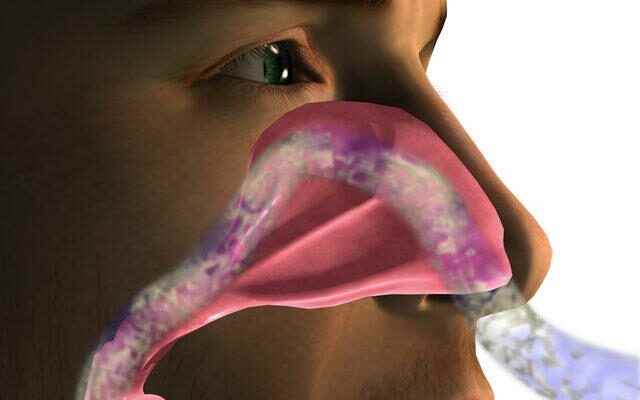Postnasal drip is the accumulation of mucus in the throat or the feeling of mucus flowing from the nose to the pharynx, that is, the throat. Normally, the inside of the nose and sinuses are lined with a tissue called “mucosa”. Small secretory cells in the mucosa produce a total of 1-2 liters of fine “mucus” per day. The hair cells on the mucosa, on the other hand, push this thin mucus rhythmically to the nasal region in a certain direction. This mucus is swallowed during swallowing and this situation is not noticed. This mucus production and movement system is called “mucociliary clearance”. It performs many functions such as humidifying and cleaning the sinuses and inhaled air, filtering the inhaled air, keeping foreign bodies, and preventing infection.
7 PRECAUTIONS TO STOP NATURAL STRUCTURE
If the “mucociliary clearance” mechanism does not work properly for any reason or conditions that cause an abnormal increase in mucus production, postnasal drip may occur.
Some of the conditions that cause postnasal drip are:
- Structural problems of the nose
- Cold or flu (upper respiratory viruses)
- allergic rhinitis (hay fever)
- Hot or spicy food
- Pregnancy
- Medications (usually birth control pills or hypertension medication)
- Some food allergies, such as a dairy allergy
- Cigarette smoke
- Industrial pollutants
- exhaust fumes
- advanced age
- Vasomotor rhinitis (regulation disorder in nasal secretion production, which is generally seen in advanced age)
- gastroesophageal reflux
- Other swallowing disorders
SYMPTOMS OF ANALYSIS
Symptoms of postnasal drip can be seen in different intensity and variety from patient to patient. It should also be kept in mind that most of the patients who only have a feeling of discharge do not have any of these symptoms or that these symptoms may be a common symptom of many different diseases. The most common symptoms are;
- Throat discharge, irritation and pain
- The need to swallow very often
- Continuous throat clearing
- rough sound
- Feeling of a lump in the throat
- Cough (usually lasting longer than two months)
ANALYSIS TREATMENT
Treatment for postnasal drip is done for the cause. Bacterial sinusitis is treated with appropriate antibiotics, nasal washes and sprays. In chronic sinusitis, cleaning the sinuses with endoscopic surgery is often a part of the treatment. When it comes to allergies, staying away from allergens, topical steroid sprays and new generation antihistamines are among the treatment options. If the cause of postnasal drip is gastroesophageal reflux, it is recommended to use a high pillow, not to eat before going to bed, to reduce coffee and alcohol consumption, and sometimes to use drugs such as antacids or stomach protectors.
If it is due to a structural problem in the nose such as septum deviation, turbinate enlargement, polyp, septum perforation, it can be treated surgically. It is not uncommon for the underlying cause of postnasal drip to be undetected, and this is usually the case in the advanced age group. In such cases, if there is no obstacle, it is recommended that patients increase their fluid intake (eight glasses of water a day), use mucus-thinning drugs, and wash the nose.
EFFECTIVE MEASURES AGAINST NATURAL DRAIN
- Use a cool mist humidifier or vaporizer to increase the humidity in your home or office.
- Increase fluid consumption. This will moisten the airways and thin the mucus.
- Reduce your dehydrating habits such as coffee consumption and alcohol intake.
- Do not be exposed to dry and cold weather for a long time.
- Do not be an active or passive smoker.
- Cleanse your nose with sea water spray at least twice a day before you leave the house in the morning and before you go to bed at night.
- If you have a known allergy, stay away from allergens and consult your doctor for appropriate allergy treatment.
